[Newsbits] 6-7.02.2024: Vyommitra, Obelisks & more

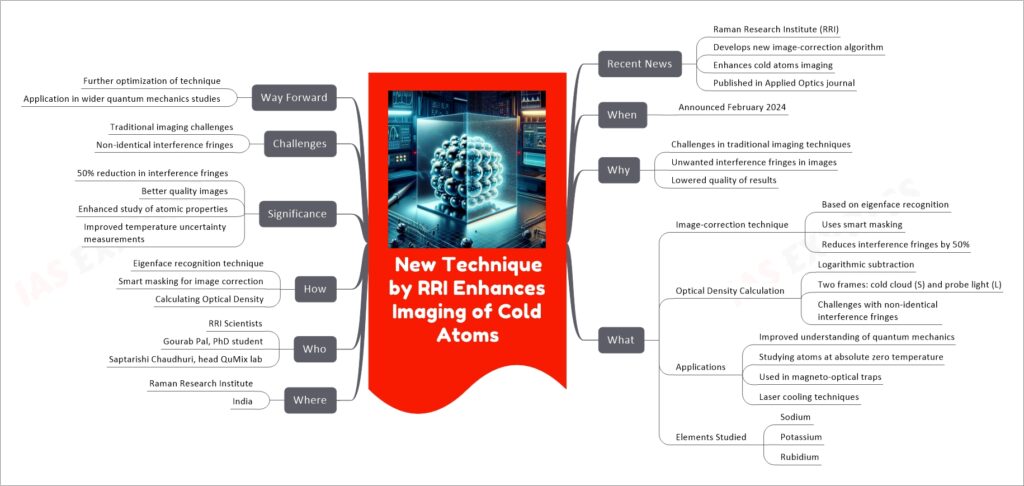
Scientists at India’s Raman Research Institute have developed a new image-correction algorithm that significantly improves the imaging of cold atoms, which are atoms at temperatures nearing absolute zero. This advanced technique is pivotal for studying the quantum mechanics properties of these atoms. The algorithm reduces unwanted interference fringes in images by about 50%, thereby enhancing the quality of the images used in these studies. This development promises to aid in a deeper understanding of atomic properties governed by quantum mechanics at extremely low temperatures.
![Animal Husbandry Infrastructure Development Fund mind map
Recent News
Continued till 2025-26
Outlay of Rs.29,610.25 crore
Approved by Union Cabinet
Chaired by Prime Minister Narendra Modi
When
Extension announced on 1st February 2024
Why
To boost animal husbandry sector
Enhance livestock infrastructure
What/Full Provisions
Includes various sub-sectors
Dairy processing and product diversification
Meat processing and product diversification
Animal Feed Plant
Breed multiplication farm
Animal Waste to Wealth Management
Veterinary vaccine and drug production facilities
Financial Support
3% interest subvention for 8 years
Including 2 years of moratorium
Loan up to 90% from banks, NCDC, NABARD, NDDB
Credit Guarantee
For MSME and Dairy Cooperatives
Up to 25% of credit from a Rs.750 crore fund
Where
Implemented across India
Who
Beneficiaries
Individuals
Private Companies
Farmer Producer Organizations (FPO)
MSME
Section 8 companies
Dairy Cooperatives
Implementing Agency
Ministry of Fisheries, Animal Husbandry & Dairying
How
Impact since inception
Added 141.04 LLPD of milk processing capacity
79.24 lakh metric ton of feed processing
9.06 lakh metric ton of meat processing
Increase in processing capacity by 2-4%
Pros/Significance
Employment generation
Direct and indirect to 35 lakh people
Entrepreneurship development
Wealth creation in livestock sector
Supports Prime Minister's goal of doubling farmers' income
Encourages private sector investment
Introduces latest technologies for processing and value addition
Cons and/or Challenges
[No specific challenges mentioned in the sources]
Way Forward
Encouraging more private investments
Continual infrastructure upgrade
Focusing on new activities
Technologically assisted breed multiplication farms
Strengthening veterinary drugs and vaccine units
Management of animal waste to wealth](https://www.iasexpress.net/wp-content/uploads/2024/02/Animal-Husbandry-Infrastructure-Development-Fund-1024x452.jpeg)
In summary, the Animal Husbandry Infrastructure Development Fund is a comprehensive scheme by the Indian government to strengthen and expand the animal husbandry sector, including dairy, meat, and feed processing. It involves a significant financial outlay and aims to increase processing capacities, generate employment, and encourage private investments in the sector, aligning with the broader goal of enhancing farmers’ income and contributing to the national economy.

The recent discovery of “Obelisks,” a new class of virus-like entities, has brought significant attention in the scientific community. Found within the human gut and mouth, these entities feature unique circular RNA genomes and are unlike any known biological agents. They were identified by researchers who analyzed over 5 million genetic datasets, finding their presence in 7% of stool samples and 50% of oral samples worldwide. Named after their rod-like structure resembling ancient monuments, obelisks contain genes for a novel protein superfamily called “Oblins.” Despite their widespread presence and intriguing nature, their function and impact on human health remain largely unknown, marking an exciting yet challenging frontier in microbiome research.
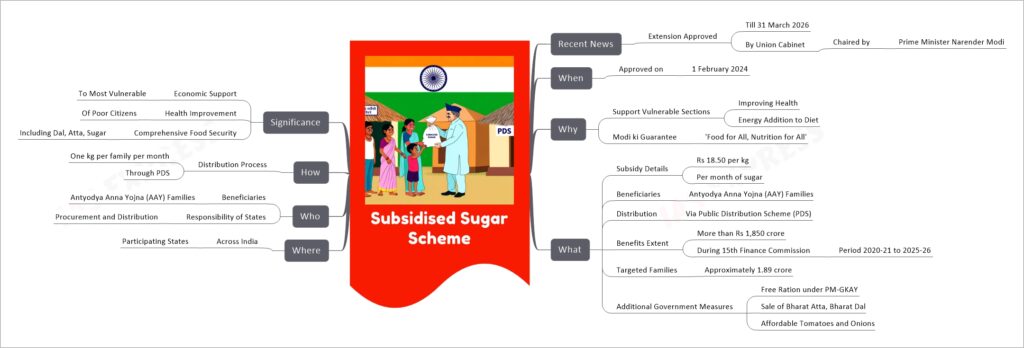
The Subsidised Sugar Scheme, recently extended until March 31, 2026, by the Indian government under Prime Minister Narender Modi, aims to support economically vulnerable sections of society. This scheme provides a subsidy of Rs 18.50 per kg of sugar each month to approximately 1.89 crore families under the Antyodya Anna Yojna (AAY), distributed through the Public Distribution System (PDS). This initiative is part of a broader effort to ensure food and nutritional security for all, aligned with the government’s ‘Modi ki Guarantee’ of ‘Food for All, Nutrition for All’. The scheme not only offers economic support to the poorest citizens but also contributes to their health improvement by ensuring access to essential food items like sugar, dal, and atta at affordable prices.

The Jammu and Kashmir Local Bodies Laws (Amendment) Bill, 2024, is a legislative measure introduced and passed in the Lok Sabha on February 5 and 6, 2024, respectively. The bill aims to amend existing local body laws in Jammu and Kashmir, specifically the Jammu and Kashmir Panchayati Raj Act of 1989, the Jammu and Kashmir Municipal Act of 2000, and the Jammu and Kashmir Municipal Corporation Act of 2000. The primary objective of this amendment is to provide reservation for Other Backward Classes (OBCs) in Panchayats and Urban Local Bodies in the region. This move is seen as an essential step towards ensuring justice for OBC citizens and aligning local body laws with the provisions of Parts IX and IXA of the Indian Constitution. The bill was introduced by Union Minister of State Nityanand Rai on behalf of Union Home Minister Amit Shah. The significance of this bill lies in addressing previous constitutional impediments that had delayed local body polls in Jammu and Kashmir. The way forward includes the effective implementation of these reservation provisions and the conduct of local body elections.
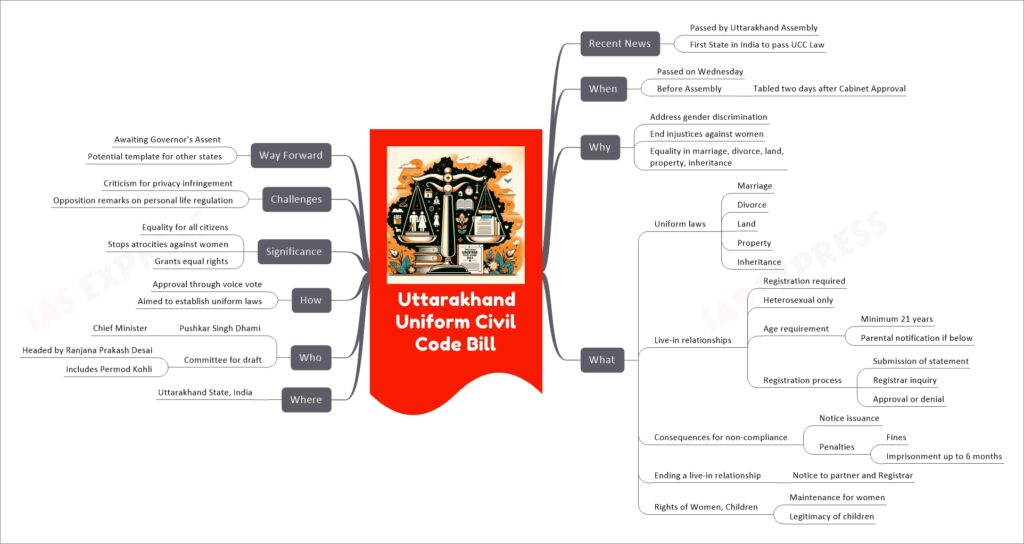
The Uttarakhand Uniform Civil Code Bill represents a landmark legal reform in Uttarakhand, aiming to establish uniform laws across various religions in matters of marriage, divorce, inheritance, and property. It also includes provisions for regulating live-in relationships, requiring heterosexual couples to register their relationships with the government. This bill is seen as a step towards ensuring gender equality and ending discrimination against women. However, it has also attracted criticism for intruding into personal lives and lacking provisions for same-sex couples.
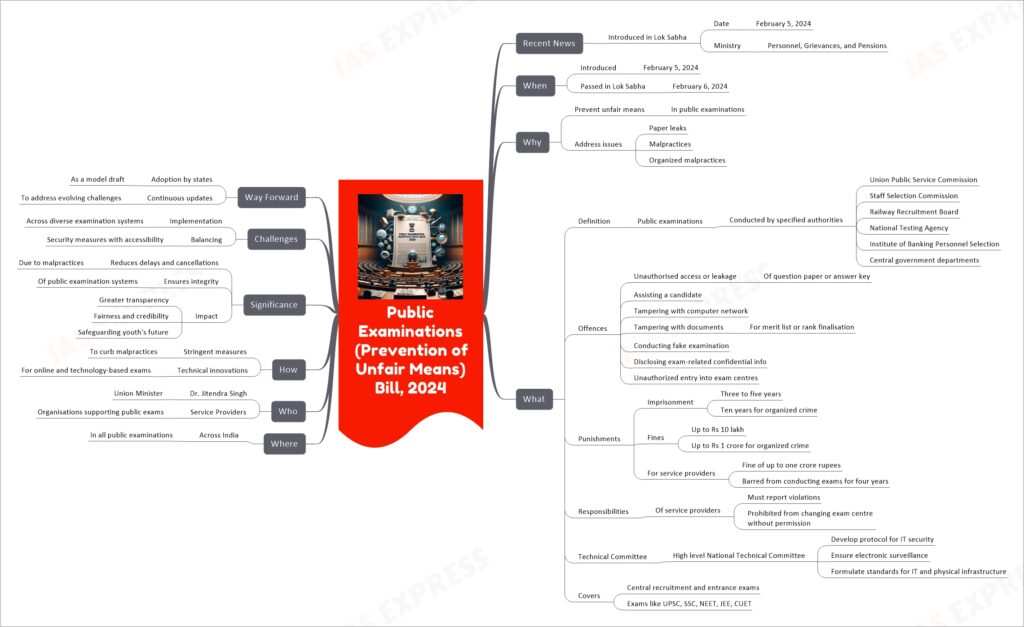
The Public Examinations (Prevention of Unfair Means) Bill, 2024, introduced in the Indian Lok Sabha on February 5, 2024, and passed the next day, is a legislative framework designed to curb malpractices like paper leaks and unfair means in public examinations. This Bill, under the Ministry of Personnel, Grievances, and Pensions, aims to ensure transparency, fairness, and integrity in the public examination systems. It covers exams conducted by various central authorities like the UPSC, SSC, and NTA. The Bill specifies stringent punishments, including imprisonment and hefty fines, particularly focusing on organized crime and service providers facilitating malpractices. A significant aspect of the Bill is the establishment of a High-level National Technical Committee to oversee the security of digital platforms used in examinations.
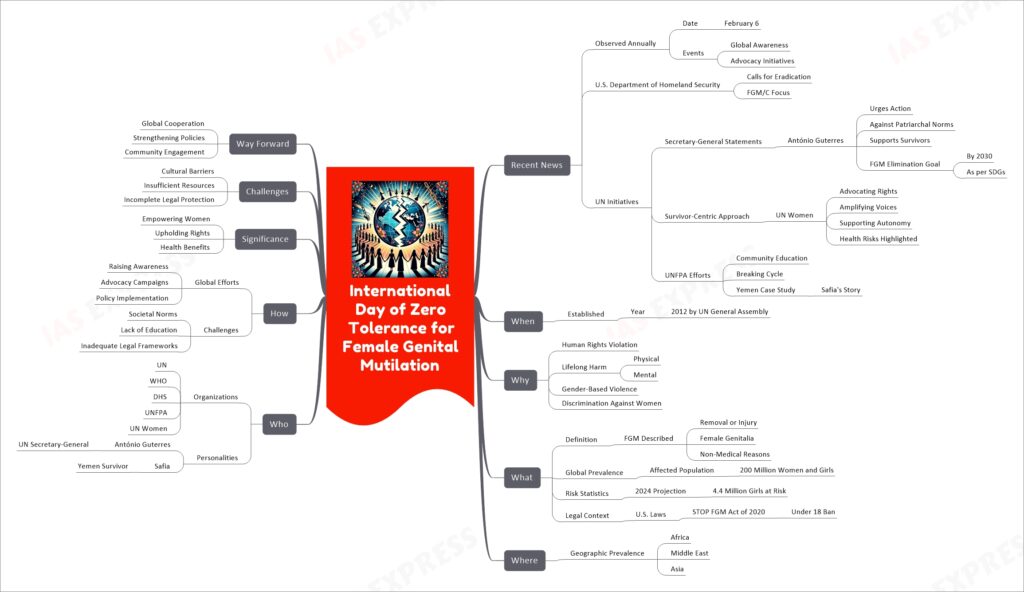
The International Day of Zero Tolerance for Female Genital Mutilation, observed annually on February 6, is a global initiative to eradicate Female Genital Mutilation/Cutting (FGM/C). This day, established by the United Nations General Assembly in 2012, emphasizes the need to eliminate a practice that causes significant physical and mental harm to women and girls and is considered a severe violation of human rights and gender-based violence. With about 200 million affected women and girls globally and 4.4 million girls at risk in 2024 alone, the day calls for decisive action against patriarchal norms, amplifying survivors’ voices, and promoting global cooperation to uphold women’s rights and health. The efforts are aligned with the Sustainable Development Goals’ target of eliminating FGM by 2030. Organizations like the UN, WHO, DHS, UNFPA, and UN Women play a pivotal role in this initiative through advocacy, raising awareness, and supporting legal frameworks like the U.S.’s STOP FGM Act of 2020.
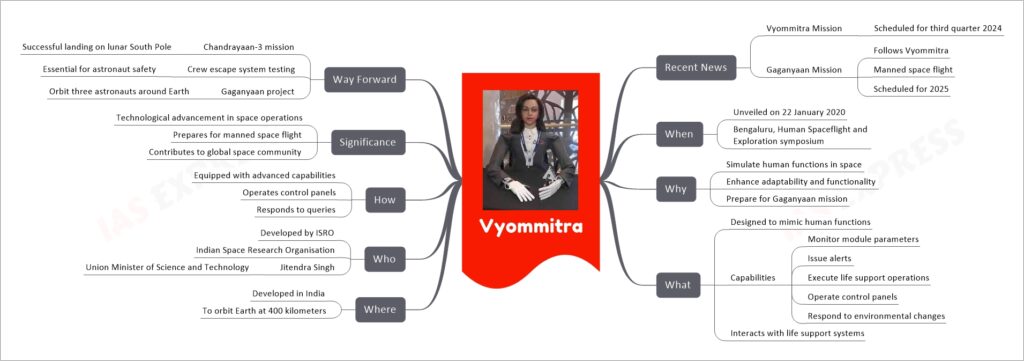
Vyommitra, developed by the Indian Space Research Organisation (ISRO), is an advanced female robot astronaut designed to simulate human functions in space environments. The name ‘Vyommitra’ is derived from two Sanskrit words: ‘Vyoma’ (space) and ‘Mitra’ (friend), signifying its role as a companion in space exploration. Equipped with capabilities to monitor module parameters, issue alerts, and execute life support operations, Vyommitra is slated for a mission in the third quarter of 2024. This mission precedes the ambitious Gaganyaan mission, scheduled for 2025, which aims to send Indian astronauts into space for the first time. Vyommitra’s launch represents a significant step in technological advancement and preparation for India’s first manned space flight.
Vyommitra is a humanoid robot created by ISRO to pioneer space operations ahead of India’s first manned spaceflight, Gaganyaan. This mission is part of India’s continued efforts in space exploration and technological development. With Vyommitra’s successful deployment, India will further solidify its position in the global space community.
If you like this post, please share your feedback in the comments section below so that we will upload more posts like this.
